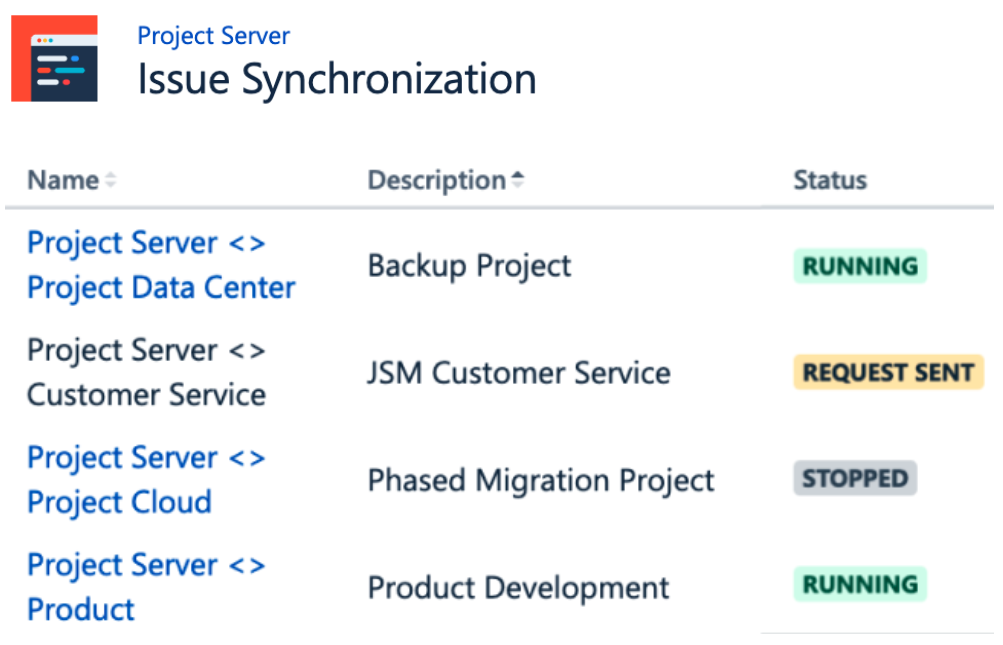Unlock Scalability and Flexibility: Migrate to Jira Cloud in Phases
Simplify Cloud Migration While Reducing the Risk of Data Loss and Downtimes
Backbone: Your Key to a Successful Cloud Migration
Problem
Moving to Jira Cloud can save you money and make your business more flexible. However, it can be a complex process and migrating everything at once can lead to data loss and disrupt your work.
Solution
Migrating in phases using Backbone Work Sync minimizes risks and ensures smooth transition to Jira Cloud.
Migrate Jira to the Cloud with Confidence
After using Atlassian's migration tool to migrate your data from on-premise to Jira Cloud, use Backbone Work Sync to keep your instances synced. Backbone enables a phased migration approach, minimizing the risk of data loss and downtimes.

Ease Your Users Onto Jira Cloud
A phased migration gives your team time to transition to Jira Cloud. Backbone keeps all Jira work items synced across both instances, allowing users to continue working on the old Jira instance while they adapt. Backbone also lets you set up multiple syncs to keep all Jira spaces updated.
Maintain Flexibility and Minimize Workflow Disruptions
Map work item types, (custom) fields, and statuses allowing you to maintain your existing Jira workflows or adopt new ones in the Cloud.
Let’s Dive Deeper
Learn more about how you can use Backbone Work Sync to lead an incident-free migration to Jira Cloud in phases.
See how a phased migration strategy, in comparison to "lift and shift", could help you reduce the risk of data loss and prolonged downtimes.
Learn how a phased migration strategy, compared to other strategies, could help reduce the risk of data losses and prolonged downtimes.
Learn about why migrating from Jira server to cloud could be a good idea for your business and how to begin the process.
Reliable Syncs, Built for Every Jira Setup
Sync your Jira spaces your way - flexible, secure, and easy to set up, with full control over what gets shared.
Don’t Just Take Our Word for It!
Hear It from Our Customers
Why Backbone Is the Right Choice for You
Backbone Ticks All the Boxes for Enterprises
Data Residency
Complete control over the region where your data will be stored and processed (US, EU, DE).
No-Code Configuration
Easy Jira-based UI, click-through configuration, and no need for any manual scripting.
Data Encryption
Cryptographic privacy and authentication for data transfer to ensure confidentiality and integrity.
Atlassian Cloud Fortified
Compliance with highest possible security, reliability, customer support standards.
ISO 27001:2022 Certified
Robust info security management systems within the product, ensuring effective data protection and risk mitigation.
99% Uptime
Promising reliability and resiliency for your mission-critical apps to ensure business continuity.
FAQ
What is phased migration?

There are four different Cloud Migration Strategies as per Atlassian, namely Optimize and Shift, Lift and Shift, Phased, and Start Fresh.
Unlike other strategies, phased migration is broken into phases or segments and done in two to four stages.
When to use phased migration?

It is recommended to use phased migration to Cloud when you cannot migrate in a single migration window due to a very complex or large database and can’t afford a long single downtime.
It can also be used to move some teams to the Cloud while keeping others because their mission-critical apps are not yet available on Atlassian Cloud.
You can never be too cautious when opting for this business-critical and complicated move, which is why a phased migration strategy using Backbone is your safest bet.
What are the benefits of phased migration?

-Self-paced user onboarding and change management.
-Reduced single downtime.
-Opportunity to clean up the instance and work out any problems.
-Gain more time to gather iterative feedback and apply to future phases of migration.
Didn’t Find What You Were Looking For?
Here are some other Backbone use cases



